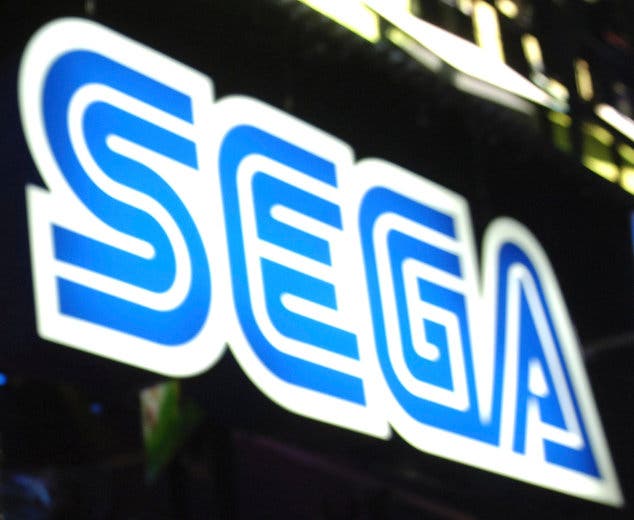The Rise and Fall of Sega Enterprises
Game over, yeah.
When Sega discontinued production of the Dreamcast console in 2001 and withdrew from the domestic hardware market, it marked the conclusion of one of the most tumultuous and error-strewn periods in the company's 72-year history. Sega Enterprises' spectacular fall from grace during the course of the 1990s remains a tragic spectacle of overconfidence and woefully misguided business practice.
At the start of the decade, Sega stood astride the gaming world like a colossus; it had smashed Nintendo's vice-like stranglehold in the US and conquered Europe with its street-smart marketing. But by the close of the '90s, the company's reputation was in tatters, its user-base had all but collapsed and it was driven dangerously close to the yawning abyss of insolvency.
This is the story of how The House That Sonic Built came crashing down in spectacular fashion.
Sega started the '90s as the underdog. Nintendo's control over the US and Japan was all-encompassing; it held sway over 90 per cent of the global video game market and had effectively swatted away the limp challenge of Sega's Mark III (also known as the Master System). The 8-bit Famicom was under millions of TV sets in Japan, while the western variant - known as the Nintendo Entertainment System, or NES - achieved similar penetration in North America.
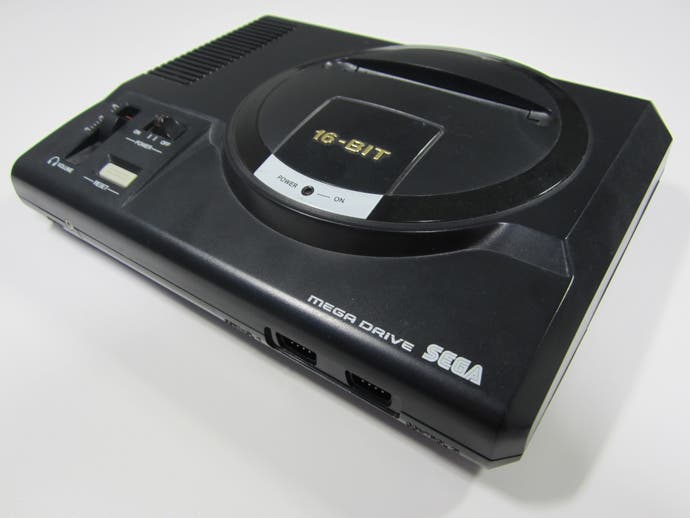
However, that was all set to change with the unveiling of the 16-bit Mega Drive. Released in its native Japan at the close of 1988, the machine had struggled to unseat the incumbent Famicom, but it would be in the West where Sega's true fortunes lay.
The stars began to align with the 1989 launch of the Mega Drive - rechristened Genesis - in North America. After a encouraging start, the new console started to chip away at Nintendo's previously unassailable lead. A savvy combination of faithful arcade conversions and licensed sports titles helped establish a prestigious user-base, but it took a certain blue hedgehog to really hammer home Sega's message.
"I think Sega hit strongly on two fronts: marketing and Yuji Naka, who of course gave the company Sonic," comments Scot Bayless, who served as a senior producer at Sega of America during the period. "Sonic was - and still is - a genuinely iconic character, and he hit at exactly the right time. Combine that with great marketing execution, and suddenly Sega was the cool kid."
Sega's edgy attitude enabled it to leapfrog Nintendo not just in the US but also in Europe, where the success of the Master System had laid the ideal foundations for the new console. "Sonic was a phenomenon," says Mike Brogan, Sega Europe's development director at the time. "It was iconic and, in my opinion, was the main reason for Sega's success against Nintendo in this period." By 1992, Sonic had helped Sega to snag 60 per cent of the North American market - an almost unthinkable achievement considering Nintendo's previous dominance in that region.
Welcome to the Fantasy Zone
Getting to the top of the pile was one challenge, but remaining there proved to be quite another. As it looked to buttress its freshly won market share, Sega made the first of many critical missteps - it launched the Mega-CD. Even within Sega, there were serious doubts regarding the wisdom of such a move. "Add-on devices don't increase market share," explains Brogan. "By their very nature, they sell into the existing customer base." However, before the unit even had the chance to be exposed to consumer apathy, it experienced a nightmarish path to market.
"I joined Sega just as Mega-CD was emerging from Engineering in Japan," recalls Bayless. "My first significant job at the company was to help bring the device into the US market. It was a launch full of stumbles, but without question some of the worst errors were technical.
"The Mega-CD was designed with a cheap, consumer-grade audio CD drive, not a CD-ROM. Quite late in the run-up to launch, the quality assurance teams started running into severe problems with many of the units - and when I say severe, I mean units literally bursting into flames. We worked around the clock, trying to catch the failure in-progress, and after about a week we finally realized what was happening. The specified limit on time spent seeking the heads versus playing a track was 5 per cent. Some of our video-based titles were running around 90 per cent. We were causing the motors in the drives to catch fire."
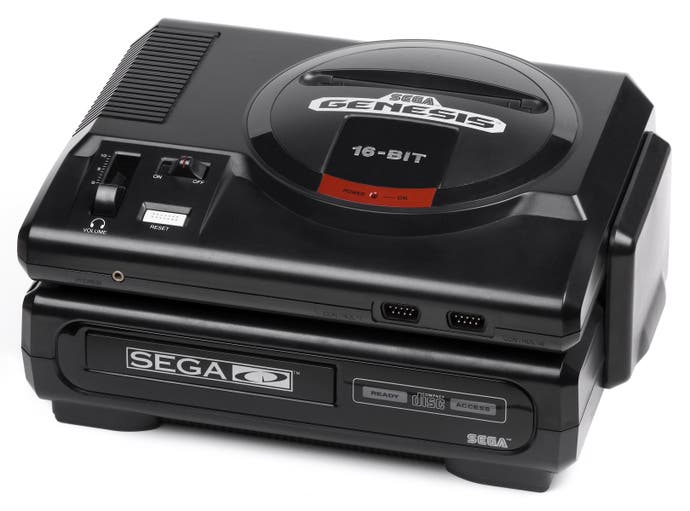
Bayless and his team managed to overcome these obstacles, and the Mega-CD made it to store shelves. The initial signs were encouraging, and Bayless reveals that the device garnered celebrity fans in pop superstars Michael Jackson and David Bowie. The system even played host to what was arguably one of the most infamous video games of all time.
"Night Trap got Sega an awful lot of publicity," says Brogan. "Questions were even raised in the UK Parliament about its suitability. This came at a time when Sega was capitalizing on its image as an edgy company with attitude, and this only served to reinforce that image." However, amid the appallingly grainy FMV 'interactive movies' and hastily retooled updates of existing Mega Drive games, the Mega-CD had precious little in the way of truly essential software. Its failure to capture the imagination of the public did much to erode the good work achieved via the Mega Drive.
"The Mega-CD never really had a reason to exist," admits Bayless. "I remember we were inundated with inquiries from music people; they were fascinated with the apparent potential of a game machine that could play CD quality music, but in practice that didn't translate into a vastly improved game experience. I remember sitting in a pitch meeting while Thomas Dolby tried to sell us on a music-based adventure title. We all thought his concept was interesting, but too thin to carry a full game. Looking back, that should have been a clue that something was off the rails. If Thomas Dolby couldn't come up with something interesting to do with music in a game, what the heck did we think we were going to do that was so much better?"
Organised Chaotix
It was a valuable lesson to Sega, but it sadly wasn't heeded - the Mega-CD's lukewarm reception did nothing to dull the company's appetite for similar hardware augmentation. What followed was the 32X, an attempt to prolong the lifespan of the Mega Drive in the West and tackle the impending launch of several newer, more powerful systems.
"The 32X was born in a call from Sega of Japan president Hayao Nakayama to Sega of America's R&D head Joe Miller," reveals Bayless. "He was on speakerphone and there were several of us in Joe's suite at CES in Vegas. Mr Nakayama basically said that we had to do something about Atari's forthcoming 64-bit Jaguar console. An hour later, Marty Franz - SOA's vice president of technology - had sketched up a device that sat on the Mega Drive system bus, sported a ton of power and had two ginormous frame buffers that could be accessed directly by both the Mega Drive CPU and a pair of Hitachi SH-2 CPUs.
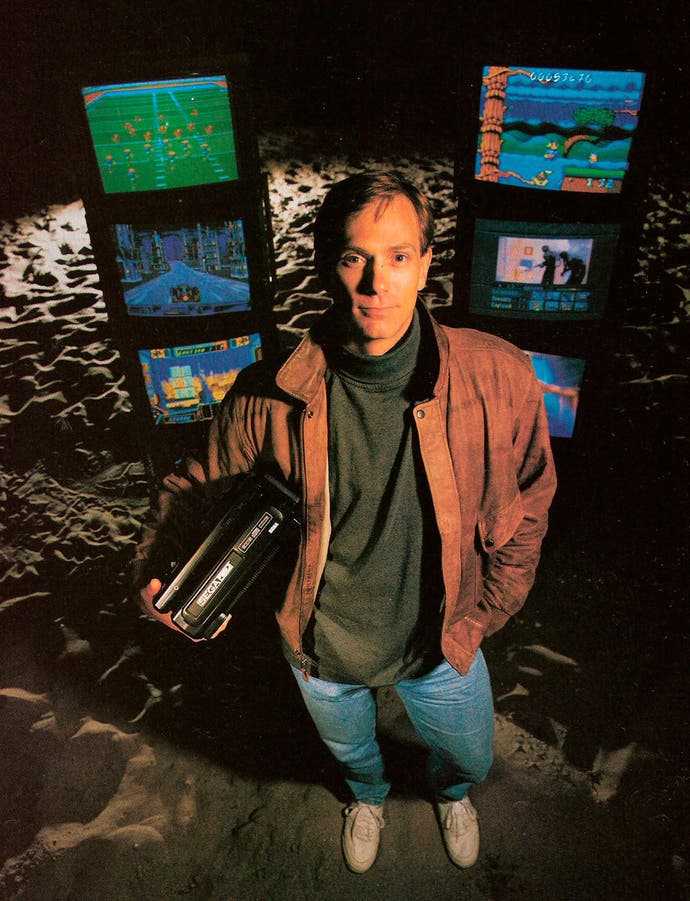
"For anyone who'd been exposed to the cutting edge of PC game development of the day, it was a coder's dream - at least in theory. Where it started to go sideways was in implementation. By the time it got to market, the 32X had been pared down significantly for cost reasons, but that reduction severely impaired its functionality, leaving it in a weird, uncompetitive space versus other devices that were looming on the horizon."
Bayless feels that Sega was guilty of focusing its attention on entirely the wrong rival. "I think the decision to respond to Jaguar was symptomatic of that pervasive lack of direction that lay below the surface at Sega. Without a clear vision, we were just reacting.
"There's an old bit of racing wisdom, 'What's behind me doesn't matter.' At least at an institutional level, Sega seemed to be living the exact opposite. Strategically, we always seemed to be focusing on what the other guy was doing instead of inventing the future as we saw it."
Looking back, it's almost a given that Sega fans would ignore the 32X - especially when you consider that the Mega Drive's true successor was just around the corner. "We were basically doing 32X to buy time for the 32-bit Saturn," continues Bayless. "Unfortunately, that turned out to be a really confusing message for fans. How do you convince someone to buy a stopgap? The result was disastrous on pretty much every level. The hardware was rushed, because there was such a narrow window ahead of Saturn. The software was rushed for the same reason. The pressure to reduce cost was even worse than normal because the bosses at Sega of Japan knew full well that the 32X had a limited lifespan. The consumer message was nearly impossible to sell."
32-Ex
Over in Europe, the situation was equally dire. Brogan and his team were given the thankless task of promoting a device that they had zero faith in. "Our first reaction was one of dismay. Saturn launch was about a year away, and it seemed crazy to divert resource from that into 32X. I'm not just talking about Sega's resource to develop the hardware, either; we were concerned that it would confuse the third party developers who would have to choose whether to put their effort into 32X or Saturn.
"This was January 1994; Saturn was due to hit the streets within a year, development kits were scarce in Europe and still in the early phases, and support from Sega was very limited, so timescales for developers were ludicrously tight. Then suddenly we dropped 32X on them with even tighter timescales. They thought we were crazy - and we were."
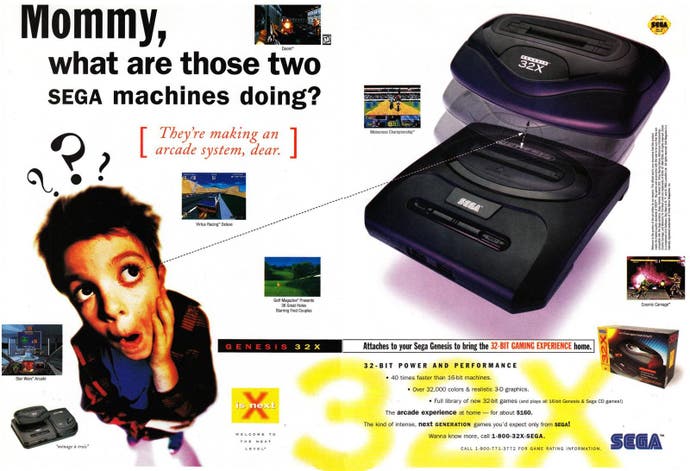
Even if the Mega-CD and 32X had both been met with rapturous success, it wouldn't have solved a more pressing issue at Sega - by the middle of the 1990s, the company was literally drowning in systems. The Mega Drive, Master System, Game Gear, Mega-CD, 32X and Saturn were all active in various markets around the globe, albeit with differing degrees of support from Sega's regional divisions. This put a massive strain on the company's already-stretched infrastructure.
Sega's rapid expansion in the early part of the decade drove an equally sizable growth in staff, but this created its own headaches. "When I joined SOA in late 1990, there were about 100 people in the entire organization," recalls Bayless. "By 1994 that number had ballooned to about fifteen times that figure. It was crazy and exhilarating; there was all this creative energy flowing, but it wasn't always effective."
Across the pond, the expansion was less dramatic, but still noteworthy. "We grew Sega Europe's development division from about 8 people to approximately 80 in this period," recounts Brogan. "It was an exciting time, but in retrospect we were too ambitious. Around half that number were software engineers, graphic artists and musicians, because we tried to start an internal development team from scratch. That was a mistake. We should have relied more heavily on third party developers. Managing a staff of that size was a challenge."
Rings of Saturn
The commercial failure of the 32X was unquestionably damaging to Sega's next-gen plans, but it was the long-lasting repercussions that possibly did the most harm. "32X split the target market," explains Bayless. "I'm Joe Gamer and I decide to take the plunge and buy 32X. Now, about 10 minutes later, you guys tell me I need to dump my 32X and buy Saturn? But now I'm broke! 32X was also a body blow to Sega's credibility. The first punch was Mega-CD, and then along comes 32X - another rushed launch with a weak starting line-up. At that point, even the die-hard Sega fans were starting to ask what the heck we were thinking."
In Japan, where the Mega Drive's installed base trailed way behind the Super Famicom (SNES) and NEC's popular PC Engine, the 32X was barely an afterthought. Sega of Japan was putting all of its weight behind the 32-bit Saturn, thereby avoiding the division of resources and attention that afflicted its Western divisions. Saturn's Japanese launch at the end of 1994 was a massive success, but it didn't take long for the rival Sony PlayStation to gain the lead.
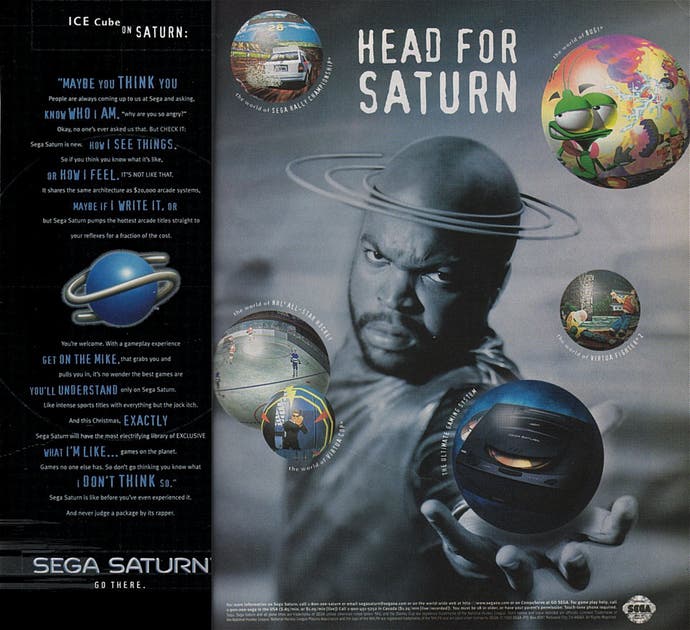
"Despite its obvious improvements, Saturn was way too little, way too late to compete successfully against the PlayStation," Bayless laments. "The Saturn graphics hardware didn't really understand 3D at all. Everything was square sprites that could be distorted to simulate projection in 3D space, but the way the sprites were rendered was horribly inefficient. The result was weak 3D performance."
Industry newcomer Sony made no such mistake with the internal architecture of its PlayStation, granting it fearsome graphical prowess which dazzled both developers and prospective buyers - many of whom had previously considered themselves to be committed Sega fans. But Sony's biggest advantage wasn't directly visible to consumers.
"Although Sega of America spent heavily to build up a massive support infrastructure for Saturn developers, Sony was far more successful in helping third parties develop games for their platform," says Bayless. "And it mattered. Saturn was internally complex - a veritable Frankenstein of multiple CPUs, shared buses and specialty chips. PlayStation was much more straightforward. The Sony development tools were better, and their support systems were better. The result was a stronger launch line-up and, at the end of the day, that put Sony on top."
Dreams Are What You Make Them
Saturn lasted just four years before Sega launched a successor in the shape of the Dreamcast in 1998. The company's last throw of the dice was undoubtedly ahead of its rivals in terms of raw power, and Sega had at least attempted to learn from its mistakes by making it an easy platform to develop for. Despite a positive launch in the US, Sega's past misdemeanours conspired against the new console, and old errors were repeated.
"As good as Dreamcast was, it's a classic example of solving last year's problem," explains Bayless. "Everything about it seemed to be aimed at countering the things that made PlayStation so successful. It was well-executed, feature-rich and pretty much ticked every check box against Sony's console, but PS2 was about to shift the paradigm once again.
"Sega had, for several years, been launching new hardware at great cost, and failing to reap anything close to a sufficient return on that investment. Dreamcast did $132 million in sales right out of the gate in North America, but so what? The company spent more than that just getting it to market. Unless Dreamcast had been able to achieve a massive attach rate there was almost no way it could have saved Sega's hardware business. The damage had already been done."
When the along-awaited Sony PlayStation 2 hit the market in 2000, it marked the end of the Dreamcast's chances. Money was sunk into costly developments that had no chance of reclaiming the expense - Yu Suzuki's $50 million magnum opus Shenmue being one prime example. To make matters considerably worse, Japan was plunged into recession, prompting many companies - not just Sega - to tighten their belts.
"I'd be stunned if Sega hadn't tried to find new capital to keep the machine going while they exploited the beachhead that Dreamcast gave them," muses Bayless. "But I'd be just as stunned if that capital had actually been forthcoming. That particular period was a very bad time to need fresh money. That wasn't Sega's fault, but I'm sure it had a big impact on their decision to shut down hardware development."
The Dream is Over
January 31st, 2001 was the fateful day when Sega officially announced that it was cutting the Dreamcast adrift and was setting sail for the open waters of third party software development. To dedicated fans it was a horrific and almost unbelievable event, but to Brogan, it made perfect sense.
"When I first joined the company, I remember having a meeting with Tom Kalinske - who was then Sega of America CEO - and one of the questions I put to him was whether Sega saw itself primarily as a hardware company or as a software company. I said that if the answer was a software company, then why didn't it develop games for other platforms? Tom smiled at that and acknowledged that it was in the software business but, in his words, Mr Nakayama would rather cut off his right arm than develop anything on Nintendo hardware."
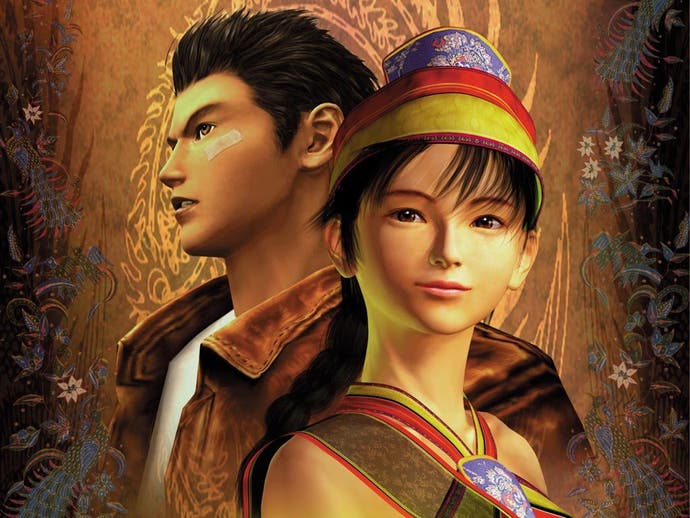
By 2001 however, both Kalinske and Nakayama had parted company with Sega, and the harsh realities of the business forced the inconceivable to occur. Even so, Sega's transition from hardware to solely software wouldn't be enough to save it from the chopping block - additional assistance was required, and that came from a man named Isao Okawa.
Okawa was chairman of CSK Holdings, the Japanese company that was the majority shareholder in Sega Enterprises during the late '90s. After forcibly removing Sega president Shoichiro Irimajiri in 2000, many assumed that Okawa was about to shut down the ailing video game veteran for good.
In fact, Okawa granted the company the vital transfusion of funds that would ultimately keep it alive. In 1999, he loaned $500 million of his own money to pay off Sega's debts - a loan he would later waiver on his deathbed two years later. When the 74 year-old Okawa succumbed to heart failure in 2001 following an arduous battle with cancer, he also gifted Sega his personal shares in both the company itself and CSK, which equated to a cool $695 million. The immense generosity of this one individual aided Sega's painful move into software publishing, and safeguarded its long-term future.
These days Sega Enterprises is known as Sega Corporation, and is a subsidiary of Sega Sammy Holdings. It remains and endures, but as a much-changed organisation. It is now famous primarily for its software, and presides over a glittering catalogue that includes Sonic the Hedgehog, Football Manager, Yakuza, Total War and many other best-selling titles. The company's financial outlook is also positive; it posted a net income of ¥41.5 billion last year - around £338 million - and it ranks as one of the largest publishers of video game software in the world.
Rise From Your Grave?
Despite the trials and tribulations of the '90s and the company's almost fatal dalliance with domestic hardware manufacturing, many fans still cling forlornly to the hope that Sega will re-enter the hardware arena and reclaim its previous lofty position. Is this anything more than a pipe dream?
"There is no future in selling hardware," replies Brogan emphatically. "In any market, through competition, the hardware eventually becomes a commodity. The future is in software. Sega's fault was to think that its core business was selling consoles, but consoles tend to be a one-time buy for most consumers, until the next version comes along. Software is a repeat purchase, so there's far more profit in it. If a company has to sell hardware then it should only be to leverage software, even if that means taking a hit on the hardware. I think some of the senior people in Sega never really understood that."
Bayless is a little more open to the idea of a triumphant return - although he admits that things have changed since the glory days of the Mega Drive. "This industry isn't static - far from it. We're in the Wild West right now and people are trying all kinds of crazy stuff because they can. I absolutely guarantee new stuff will emerge from all that chaos. Could that include new Sega hardware? Of course, but it's not really about that - it's about engagement and value. As my Depression Era salesman grandfather used to say, 'Nobody makes money until someone sells something.' I'd paraphrase that as, 'First you have to show people something they want to buy.' If I were invited to advise Sega on moving back into hardware, I'd start by asking one question: What will you do better than anyone else in the world?"
To long-suffering Sega fans everywhere, the answer is no doubt very simple. For the time being they will have to warm themselves not with the prospect of Dreamcast 2, but with the happy memories of beloved systems long since consigned to obsolescence and legend.
